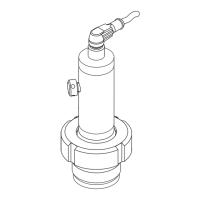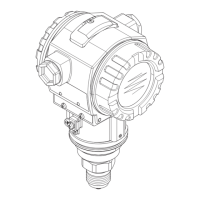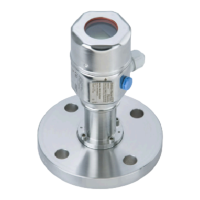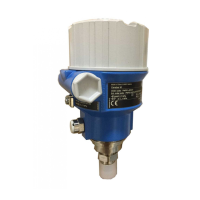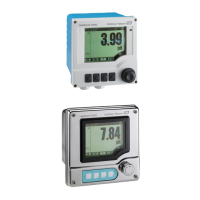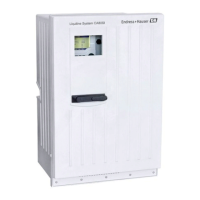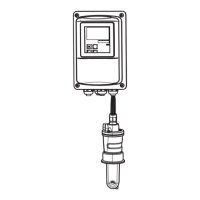Installation Cubemass DCI MODBUS RS485
14 Endress+Hauser
3.2.4 Heating
Some fluids require suitable measures to avoid loss of heat at the sensor. Heating can be electric,
e.g. with heated elements, or by means of heating jackets or copper pipes conveying hot water or
steam.
"
Caution!
• Danger of electronics overheating! Make sure that the maximum permissible ambient
temperature for the transmitter is not exceeded.
The adapter between the sensor and transmitter and the connection housing of the remote
version must always remain free of insulating material.
• If using an electric trace heating system whose heating is regulated via phase control or pulse
packages, there is the possibility that measured values could be influenced by magnetic fields
which may occur (i.e. for values greater than those permitted by the EC standard (sine 30 A/m)).
In such instances, it is necessary to magnetically shield the sensor.
The secondary containment can be shielded with tin plate or electric sheets without privileged
direction (e.g. V330-35A) with the following properties:
– Relative magnetic permeability μ
r
≥ 300
– Plate thickness d ≥ 0.35 mm (≥ 0.0011")
• For information on the permitted temperature ranges → ä 89
In the case of measuring devices that are used in hazardous areas, the trace heating system may
not generate temperatures above the permitted fluid temperature per temperature class.
3.2.5 Inlet and outlet runs
There are no installation requirements regarding inlet and outlet runs. If possible, mount the sensor
upstream of fittings such as valves, T-pieces, elbows etc.
3.2.6 Vibrations
The high oscillation frequency of the measuring tubes ensures that the correct operation of the
measuring system is not influenced by pipe vibrations. Consequently, the sensors require no special
measures for attachment.
3.2.7 Limiting flow
Limiting flow information can be found in the separate "Technical Information" document,
→ ä 94.

